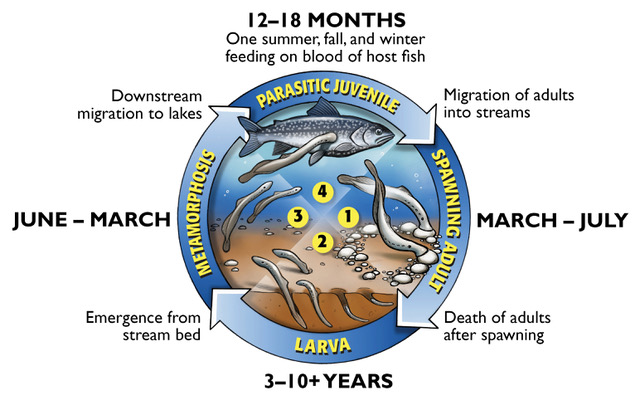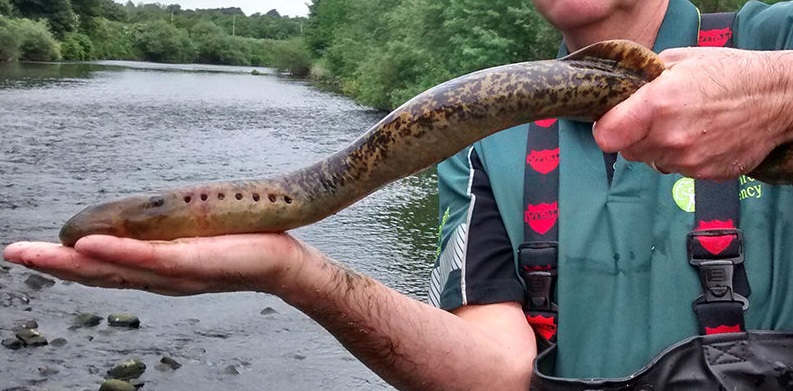EPISODE 305 SEA LAMPREYS, : CONTRIBUTE TO THE GREAT LAKES DISASTER
![]() www.science-rumors.com/wp-content/uploads/2018/10/Fact-about-Sea-Lamprey-to-know-What-this-Creature-is-300×148.jpg 300w, www.science-rumors.com/wp-content/uploads/2018/10/Fact-about-Sea-Lamprey-to-know-What-this-Creature-is-768×379.jpg 768w” sizes=”(max-width: 793px) 100vw, 793px” apple-inline=”yes” id=”993B8393-9A04-44F5-AB54-F7BFF7C9F434″ src=”http://alanskeoch.ca/wp-content/uploads/2021/04/Fact-about-Sea-Lamprey-to-know-What-this-Creature-is.jpeg”>
www.science-rumors.com/wp-content/uploads/2018/10/Fact-about-Sea-Lamprey-to-know-What-this-Creature-is-300×148.jpg 300w, www.science-rumors.com/wp-content/uploads/2018/10/Fact-about-Sea-Lamprey-to-know-What-this-Creature-is-768×379.jpg 768w” sizes=”(max-width: 793px) 100vw, 793px” apple-inline=”yes” id=”993B8393-9A04-44F5-AB54-F7BFF7C9F434″ src=”http://alanskeoch.ca/wp-content/uploads/2021/04/Fact-about-Sea-Lamprey-to-know-What-this-Creature-is.jpeg”>


![]() www.science-rumors.com/wp-content/uploads/2018/10/20-Facts-about-Sea-Lamprey-to-know-What-this-Creature-is-300×180.jpg 300w, www.science-rumors.com/wp-content/uploads/2018/10/20-Facts-about-Sea-Lamprey-to-know-What-this-Creature-is-768×461.jpg 768w” sizes=”(max-width: 850px) 100vw, 850px” apple-inline=”yes” id=”8732DEA3-9111-40D8-8934-4E3F977FEA2E” src=”http://alanskeoch.ca/wp-content/uploads/2021/04/20-Facts-about-Sea-Lamprey-to-know-What-this-Creature-is.jpeg”>
www.science-rumors.com/wp-content/uploads/2018/10/20-Facts-about-Sea-Lamprey-to-know-What-this-Creature-is-300×180.jpg 300w, www.science-rumors.com/wp-content/uploads/2018/10/20-Facts-about-Sea-Lamprey-to-know-What-this-Creature-is-768×461.jpg 768w” sizes=”(max-width: 850px) 100vw, 850px” apple-inline=”yes” id=”8732DEA3-9111-40D8-8934-4E3F977FEA2E” src=”http://alanskeoch.ca/wp-content/uploads/2021/04/20-Facts-about-Sea-Lamprey-to-know-What-this-Creature-is.jpeg”>
![]() www.science-rumors.com/wp-content/uploads/2018/10/Sea-Lamprey-group-300×181.jpg 300w” sizes=”(max-width: 523px) 100vw, 523px” apple-inline=”yes” id=”41A024F2-E1B4-4713-A977-0D715B6CE2B9″ src=”http://alanskeoch.ca/wp-content/uploads/2021/04/Sea-Lamprey-group.jpg”>
www.science-rumors.com/wp-content/uploads/2018/10/Sea-Lamprey-group-300×181.jpg 300w” sizes=”(max-width: 523px) 100vw, 523px” apple-inline=”yes” id=”41A024F2-E1B4-4713-A977-0D715B6CE2B9″ src=”http://alanskeoch.ca/wp-content/uploads/2021/04/Sea-Lamprey-group.jpg”>
alan skeoch
April 2021
( series titled LIFE AND DEATH IN THE GREATEST FISH BOWL ON EARTH: THE GREAT LAKES)
 www.science-rumors.com/wp-content/uploads/2018/10/Fact-about-Sea-Lamprey-to-know-What-this-Creature-is-300×148.jpg 300w, www.science-rumors.com/wp-content/uploads/2018/10/Fact-about-Sea-Lamprey-to-know-What-this-Creature-is-768×379.jpg 768w” sizes=”(max-width: 793px) 100vw, 793px” apple-inline=”yes” id=”993B8393-9A04-44F5-AB54-F7BFF7C9F434″ src=”http://alanskeoch.ca/wp-content/uploads/2021/04/Fact-about-Sea-Lamprey-to-know-What-this-Creature-is.jpeg”>
www.science-rumors.com/wp-content/uploads/2018/10/Fact-about-Sea-Lamprey-to-know-What-this-Creature-is-300×148.jpg 300w, www.science-rumors.com/wp-content/uploads/2018/10/Fact-about-Sea-Lamprey-to-know-What-this-Creature-is-768×379.jpg 768w” sizes=”(max-width: 793px) 100vw, 793px” apple-inline=”yes” id=”993B8393-9A04-44F5-AB54-F7BFF7C9F434″ src=”http://alanskeoch.ca/wp-content/uploads/2021/04/Fact-about-Sea-Lamprey-to-know-What-this-Creature-is.jpeg”>
Sea Lampreys
The first sea Lamprey was found in Lake Ontario in 1835 perhaps using the new Erie Canal as an access route.
It is suspected that these early sea Lampreys took a short cut north to Lake Ontario first and much later
used the Welland Canal to get access to the upper Great Lakes.
There are four kinds of lampreys but
the sea lamprey was the most threatening to the Great Lakes fishery because it adapted to fresh water life. And
found the lake trout easy prey….Slow moving deep down in Lake Ontario…Fat. Lots of blood…
Easy to grab.. Just swim up beside then use the barbs on their velcro like mouths to hook
a lake trout anywhere and begin sucking the life blood out of them. One sea lamprey can eat forty pounds
of fish (not just lake trout)
Since the sea lamprey found life in the Great Lakes abundant with easy prey it did not return to the Atlantic
ocean as the creature may have planned when it first gained access. The clean, clear, fast flowing rivers
were ideal for sea lamprey spawning. One female sea lamprey produces
up to 100,000 baby lampreys. It did not take long for the sea lampreys population to overwhelm
the natural fish cycles in the Great Lakes. By 1960 the top predator, the Lake Trout, that served
the function of keeping the fish population in balance was nearly extinct.
- Lake Ontario, 1835
- Lake Erie, 1921
- Lake Huron, 1932
- Lake Michigan, 1936
- Lake Superior, 1938
.

 www.science-rumors.com/wp-content/uploads/2018/10/20-Facts-about-Sea-Lamprey-to-know-What-this-Creature-is-300×180.jpg 300w, www.science-rumors.com/wp-content/uploads/2018/10/20-Facts-about-Sea-Lamprey-to-know-What-this-Creature-is-768×461.jpg 768w” sizes=”(max-width: 850px) 100vw, 850px” apple-inline=”yes” id=”8732DEA3-9111-40D8-8934-4E3F977FEA2E” src=”http://alanskeoch.ca/wp-content/uploads/2021/04/20-Facts-about-Sea-Lamprey-to-know-What-this-Creature-is.jpeg”>
www.science-rumors.com/wp-content/uploads/2018/10/20-Facts-about-Sea-Lamprey-to-know-What-this-Creature-is-300×180.jpg 300w, www.science-rumors.com/wp-content/uploads/2018/10/20-Facts-about-Sea-Lamprey-to-know-What-this-Creature-is-768×461.jpg 768w” sizes=”(max-width: 850px) 100vw, 850px” apple-inline=”yes” id=”8732DEA3-9111-40D8-8934-4E3F977FEA2E” src=”http://alanskeoch.ca/wp-content/uploads/2021/04/20-Facts-about-Sea-Lamprey-to-know-What-this-Creature-is.jpeg”> www.science-rumors.com/wp-content/uploads/2018/10/Sea-Lamprey-group-300×181.jpg 300w” sizes=”(max-width: 523px) 100vw, 523px” apple-inline=”yes” id=”41A024F2-E1B4-4713-A977-0D715B6CE2B9″ src=”http://alanskeoch.ca/wp-content/uploads/2021/04/Sea-Lamprey-group.jpg”>
www.science-rumors.com/wp-content/uploads/2018/10/Sea-Lamprey-group-300×181.jpg 300w” sizes=”(max-width: 523px) 100vw, 523px” apple-inline=”yes” id=”41A024F2-E1B4-4713-A977-0D715B6CE2B9″ src=”http://alanskeoch.ca/wp-content/uploads/2021/04/Sea-Lamprey-group.jpg”>SEA LAMPREYS
SOME FACTS
Sea Lampreys are parasites that feed by sucking the blood of host fish like trout, salmon and any others they can sidle up to..
They are ugly and that is putting it mildly. Adult sea lampreys have an eel like body with dark olive or brown yellowish colouring with
a lighter coloured belly. Most remarkable and frightening are their heads which are dominated by a round mouth with teeth arranged
in concentric circles and in the centre an opening to the body. They can grow up to 1.2 metres in length and weigh 2.5 kg.
Adult sea Lampreys live in the saltwater seas of the Northern Hemisphere (North Atlantic, Mediterranean, Black seas) but lays its eggs in freshwater streams with fast currents
where the larvae lay burrowed in the sand for many years feeding on planktons and detritus. After several years the larvae suddenly
metamorphize into young adults and historically they head for the sea. But some adjusted to life in freshwater like Lake Ontario.
Their life cycle lasts 5 to 8 years from egg to adult. Adult sea lampreys live from12 to 20 months sucking
the blood out of whatever host fish they can find. The barbed mouth grabs hold, then a ras-like tongue looses fish scales to get to the fish flesh and
to suck the fish blood killing the fish in most cases. The sea lamprey mouth injects a chemical that prevents the host fish from clotting
its blood.
One sea lamprey moving from host to host can kill 40 pounds of fish every year.
One female sea lamprey can lay 100,00 eggs.
BY 1960 over 85% of fish caught in the Great Lakes had lamprey scars.
Sea Lampreys are not natural natives of the Great Lakes. How they got here is unclear Some sources say they came up the Erie Canal
in 1835 .. partway … then decided they liked the cold fast moving rivers feeding into Lake Ontario where they settled. Still another
source believes these lampreys have been in Lake Champlain for 10,000 years. How they got into the upper Great Lakes may have happened
In 1929 when the Welland Canal was improved for shipping and also for the sea Lampreys. All sources agree that the
sea lamprey destroyed the commerce rising industry between 1940 and 1950. Why such a sudden population explosion?
A lot of guesswork and scientific exploration has not completed solved thus sudden devastation. What is known for sure is
that the sea lampreys had a devastating effect on the Lake Trout population. As soon as that happened other problems followed.
Life under water is not pleasant.. Big fish eat little fish. Strange that no fish developed a taste for adult lampreys.
Killing the sea lamprey spawning adults has been achieved by use of a chemical lampricide, TFN, to kill the larvae. Also electricity
has been used to prevent adults lampreys from getting access to their spawning grounds. Sterilization of males is also used.
Their numbers have been reduced but not extinguished. Port Credit fisherman, Andrew Skeoch, has found the occasional
ses lamprey attached to coho and chinook salmon. He practices ‘catch and release’ sport fishing. That is never done with
any lamprey…they are killed.
Perhaps the most unusual change in the sea lamprey life cycle was the total adjustment of life in fresh water. The Great Lakes
were the ‘golden marine city’ where food was plentiful and clear fast moving streams with gravel and sand bottoms made spawning phenomenally
successful. One female can lay 100,000 eggs. Some larvae get eaten by other creatures but one sampled river in the upper Great
Lakes trapped 22,000 sea lampreys as they headed downstream and changed into vicious predators.
One of the strangest adult changes is that they begin to breathe through 7 holes partway down their body and their eyes become
sinister looking just above their suddenly enlarged and spike filled lethal mouths. Vampires of the Great Lakes.
alan skeoch
Threats to Great Lakes 1) Overfising 2) Sea Lampreys 3) Alewife (COMING NET EPISODE)

